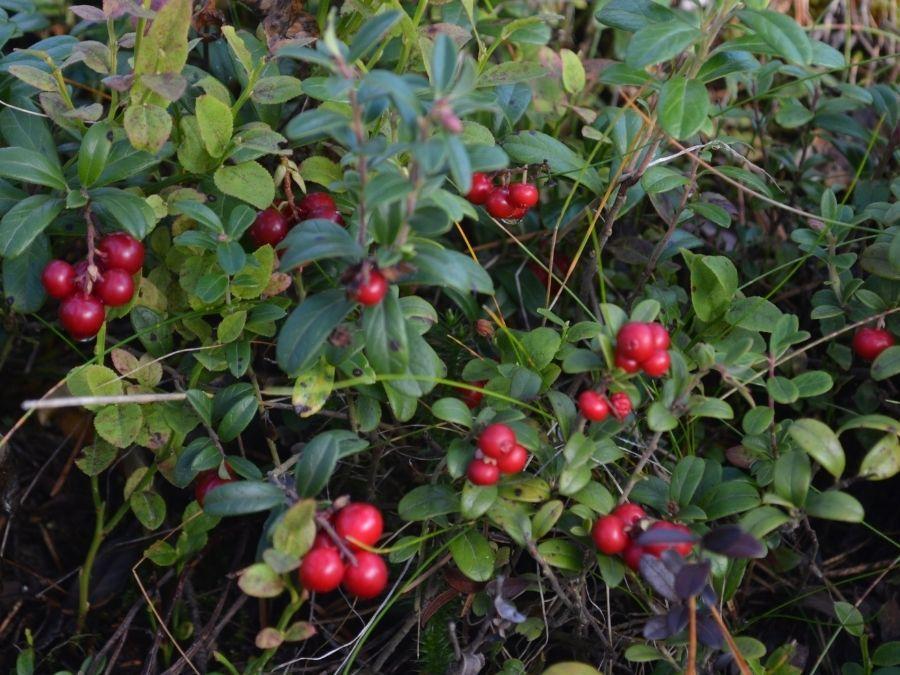Table of contents
Lingonberry has at least 14 health benefits
Of the domestic berries, the most abundant cowberry has at least fourteen clear health effects.
According to a Finnish study, regular and long-term drinking of juice made of lingonberries can lower high blood pressure and improve blood vessel function.
In addition, lingonberry has a lot of flavonoids that act as antioxidants, i.e., prevent cellular oxidation. Of the minerals, lingonberry is particularly rich in manganese. Epidemiological studies have found that foods rich in polyphenols reduce the risk of cardiovascular disease.
Both cowberry and cranberry found in swamps also contain compounds that have been shown to inhibit the adhesion of E.coli bacteria to the urinary mucosa. Indeed, consuming these berries may be helpful in preventing recurrent urinary tract infections.
According to the medical journal, an effective anti-infective dose is 2 deciliters of cranberry-lingonberry fresh juice in the morning and evening, or 30 milliliters of undiluted juice twice a day, respectively.
The fourth health effect of cowberries, which is still under investigation at this stage, is that lingonberries have been found to have properties that prevent obesity caused by a high-fat diet and the formation of harmful visceral fat.
According to a study conducted by the University of Tampere, lingonberry can reverse the disadvantages of obesity by preventing low-grade inflammation and harmful changes in sugar and fat metabolism. The study was carried out in mice, but the results obtained from them are promising also on a general level.
Characteristics of lingonberry
Cowberry is an upright or parallel-growing sparrow plant, usually 5 to 30 cm tall. The stems are hard-surfaced and the lingonberry leaves are waxy-surfaced. Lingonberries do not drop its tapered and green leaves during the winter.
The flowering of the cowberry starts between June and July. The 5- to 8-mm-long, potted-shaped flower is either white or reddish in color. The inflorescences are located at the top of the stem in a dense cluster formation.
The berry is round in shape and red in color. The taste of the berry is slightly sour and juicy. The inside of the ripe berry is white.
Of the domestic berries, lingonberry is easiest to mix with a “pig’s berry” (Arctostaphylos uva-ursi), which resembles cowberry in terms of berry shape and color. However, this berry’s plant is different from the lingonberry, the size of the berry is usually considerably larger and the color is paler. In addition, dark “hairs” grow on the berry. Although “pig’s berry” is not actually toxic, due to its dry floury and tasteless malt, it should not be picked among the lingonberry prey.
Where do the lingonberries grow and where can you pick them?
Like many domestic berries, lingonberries are also found throughout Finland, from northernmost Lapland all the way to Uusimaa. Lingonberry is the most common sparrow plant in forest undergrowth, which thrives best on dry forests, rocks and fells. However, it is also possible to find it in raven and grove forests. Lingonberries are often found in similar shadowless places where lichens also grow. I have personally noticed open places such as rock edges and felling openings as particularly good places for berry picking.
Lingonberries produce the largest harvest of our domestic wild berries. The lingonberry harvest is also more secure compared to blueberries and cloudberries, for example. This is because the lingonberries usually bloom about a couple of weeks later after the blueberry, when the already advanced summer weather is more stable and because there are more pollinating insects on the move at that time.
Berry harvest is usually at its best in areas where tree canopies do not shade the vegetation. Indeed, the most productive cowberry stands are often in the openings after final felling or under the seed stand. The best berry places may produce up to 100-500kg of crop per hectare.
The picking time for lingonberries varies a lot within the country, but in general the best picking time is from the end of August until the beginning of October. The harvest time for lingonberries could therefore be described as quite long.
The autumn 2021 lingonberry harvest is good
Despite the dry summer, the lingonberry harvest of autumn 2021 also eventually became abundant. Although the hot summer was also challenging for the lingonberries that ripened during July-August, especially in dry areas, the pollination of the berry was quite successful given the conditions.
The long-lasting heat in Finland kept many pollinating insects active during the summer, in addition to which the leafy lingonberry withstood the prevailing drought much better than blueberries, for example.
According to the Natural Resources Center, about 70 percent of the raw materials developed into ripe berries, which is slightly less than normal. However, there were more raw berries than usual in some places, which is why the harvest was good throughout Finland.
In Ranua, the dry summer caused doubts and fears about the berry harvest, but fortunately the harvest has been quite good, especially for cloudberry and lingonberries. The blueberry harvest was also decent in many locations in Ranua.
For lingonberries, the harvest season is now starting to be at its best at Ranua altitude, and if the weather favors, picking can probably continue until about the beginning of October. The lingonberries picked after the first night frosts can be used primarily for making juice.
Use and preservation of lingonberries
The versatile and fresh cowberry is versatile berry in terms of usage also. In Lapland, perhaps the most well-known product made from lingonberries is the lingonberry jam, which is very well suited as a side dish, especially alongside reindeer and moose sauté and mashed potatoes. Another popular option is the juice made from lingonberries.
However, there are multiple other ways to use lingonberries in different kinds of recipes. Good place to search for good lingonberry recipes and ideas is this lingonberry recipe guide published by BBC.
The lingonberry is usually preserved by freezing or pounding. Lingonberries are also preserved by cooking into jelly or jam, respectively. Lingonberries naturally contain preservative-promoting benzoic acid, which means that the berries are well preserved when stored in a cool or frozen state, or alternatively when stored in water.
Are you interested in berry picking?
Berry picking has been an important hobby for me since my childhood and that is also one of the reasons, why I want to publish texts also about the berries that can be found in the Finnish nature.
If you are interested in berry picking also, I can warmly recommend that you will read our cloudberry guide also. I am also planning on writing one about blueberries as well in the near future.
Sources and about the subject elsewhere: Arktiset Aromit | Lingonberries | Polarica | Lingonberries Healthline | Health Benefits of lingonberries Yummly | Lingonberry Desserts








